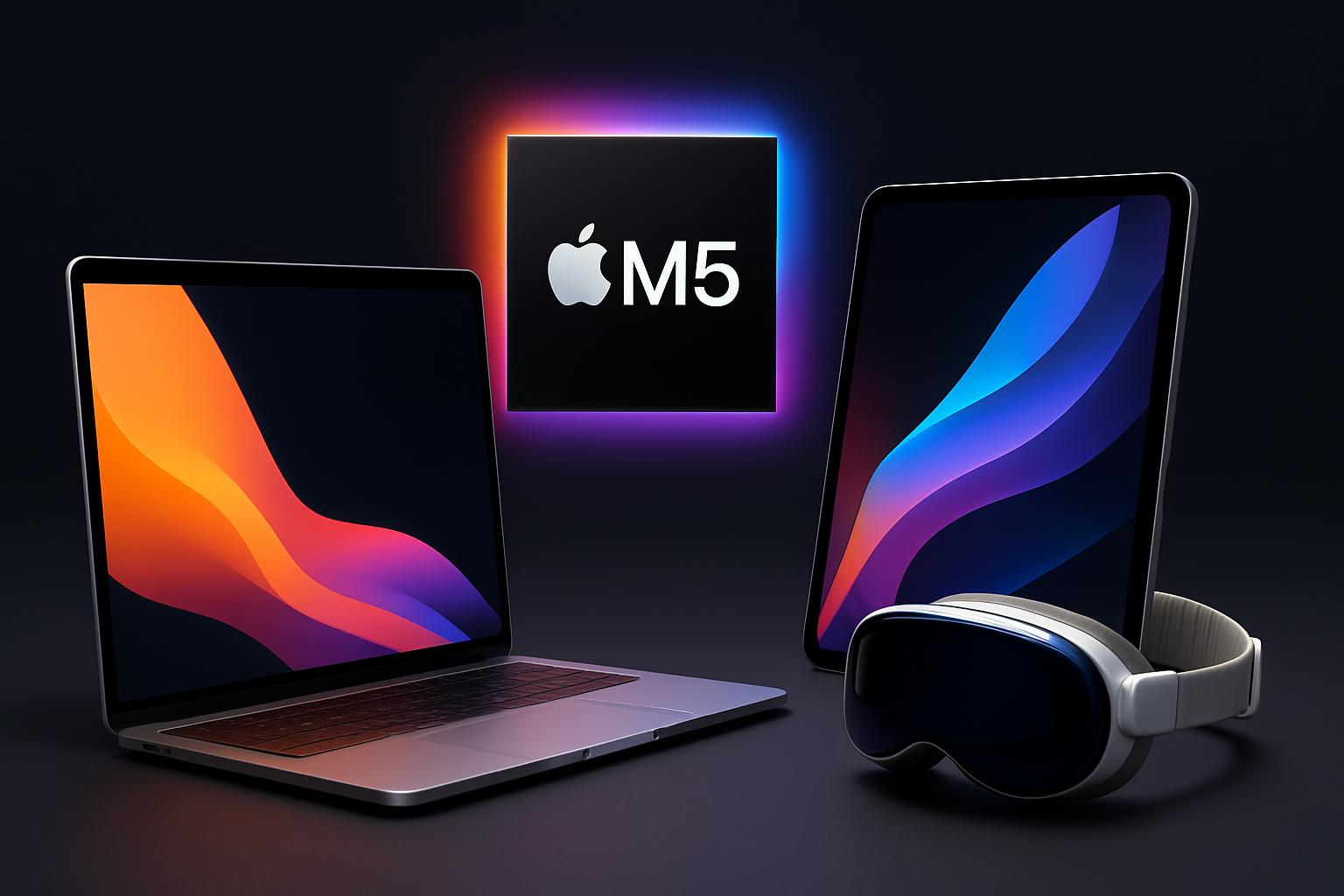Apple’s new hardware wave is entirely focused on a new M5 system-on-a-chip, and the signal is loud and clear: on‑device AI has become the standard across Mac, iPad, and Vision Pro. Along with larger claims for this generation of machine learning performance, greater battery life, and that close Apple Intelligence integration, the company is tuning every layer—silicon, software, and display—to make more of the AI work available on‑device.
The New M5 Silicon And Apple Intelligence
Made using what Apple refers to as its third‑generation 3‑nanometer process, the M5 incorporates a 10‑core CPU and 10‑core GPU, while integrated Neural Accelerators are included within every GPU core. Apple says the M5 has as much as 3.5x faster AI throughput than the M4 and up to 6x compared to the M1, positioning the chip as a powerhouse for processing large language models and multimodal workloads natively on device.
But more than raw speed, the pitch is one of practicality: faster on‑device inference times add up to lower latency for features like image generation, transcription, and context‑aware assistance without having to shuttle data off device. That complements Apple Intelligence, which overflows into system‑level writing tools, image generation, and private, device‑anchored context. Developers can leverage these improvements with Core ML, Metal optimizations, and Apple’s MLX framework to quantize their models and deploy them to devices that traditionally required a server.
M5 MacBook Pro 14‑inch adds faster AI and longer battery life
M5 comes to Mac in the form of a new 14‑inch MacBook Pro, which is faster and, more importantly, “smarter.” Apple emphasizes the capability of supporting large LLMs local to the system for coding, research, and media tasks, supported by a GPU that Apple claims comes in at 1.6x faster than the previous generation and a storage subsystem that can get up to double the SSD speeds compared to equivalent M4 configs.
Battery life is a headline measurement, with Apple boasting up to 24 hours on a single charge in its own tests. The Liquid Retina XDR display is brighter, macOS Tahoe ships out of the box, and the Apple Intelligence engine lives throughout system apps. The space black finish makes a comeback, and Apple warns that in certain European markets, the power adapter will be sold separately — mirroring regional packaging tweaks we’ve seen elsewhere in consumer electronics.
The 14‑inch M5 MacBook Pro will start at $1,599 — squarely targeting creators and developers who need desktop‑class AI acceleration in a portable form factor.
M5 iPad Pro brings desktop‑class AI features to tablet
The new iPad Pro is described as Apple’s lightest and thinnest pro tablet to date, one that now houses the same M5 silicon used in the MacBook. The company is pushing desktop‑class AI features in creative apps, pointing to Final Cut Pro and Logic Pro workflows that can leverage the Neural Accelerators to deliver noise reduction, scene detection, and smart effects without cloud round trips.

Apple also touts an improved display and longer battery life, positioning the iPad Pro as a legitimate portable production station. Apple Intelligence and system‑wide writing tools for on‑device generative imaging bring the features of a tablet closer to parity with those of Mac. Pricing begins at $999.
Vision Pro with M5 gains performance, comfort, and features
Apple’s mixed‑reality headset gets a significant internal upgrade; shifting to M5, it is also introducing the new Dual Knit Band for comfort. The company tells us that rendering performance has been accelerated, battery life now lasts for up to 2.5 hours at a time, and visionOS 26 comes with richer Personas, real‑time translation, and spatial scene generation — features designed to work more interactively on‑device.
Apple introduces support for 120Hz refresh rates and claims sharper visuals through enhanced micro‑OLED panels. Display analysts at outfits like Display Supply Chain Consultants have been talking for some time about micro‑OLED as a critical element of premium headsets, and Apple’s optics push fits that narrative. The Vision Pro, powered by the M5, begins at $3,499.
Why it matters: Apple’s on‑device AI push across lineup
The throughline between the various categories is obvious: Move AI from cloud to client, providing privacy, speed, and resilience. Analysts at industry watchers like IDC and Canalys have predicted AI‑capable PCs and tablets will soon scoop up a sizable proportion of shipments, and Apple is lining its lineup to be on the front line of that shift with in‑house silicon and close software control.
The asterisk, of course, is that many performance figures are Apple’s own numbers; third‑party analysis from labs and reviewers — think AnandTech, MLCommons‑style inference benchmarks, Notebookcheck — will be critical to confirming efficiency and throughput claims. So while M5 is seeding occasional MacBook Pro, iPad Pro, and Vision Pro projects for Apple, it has set a universal minimum that competitors would do well to match in both silicon and battery life (and ideally development tooling).

